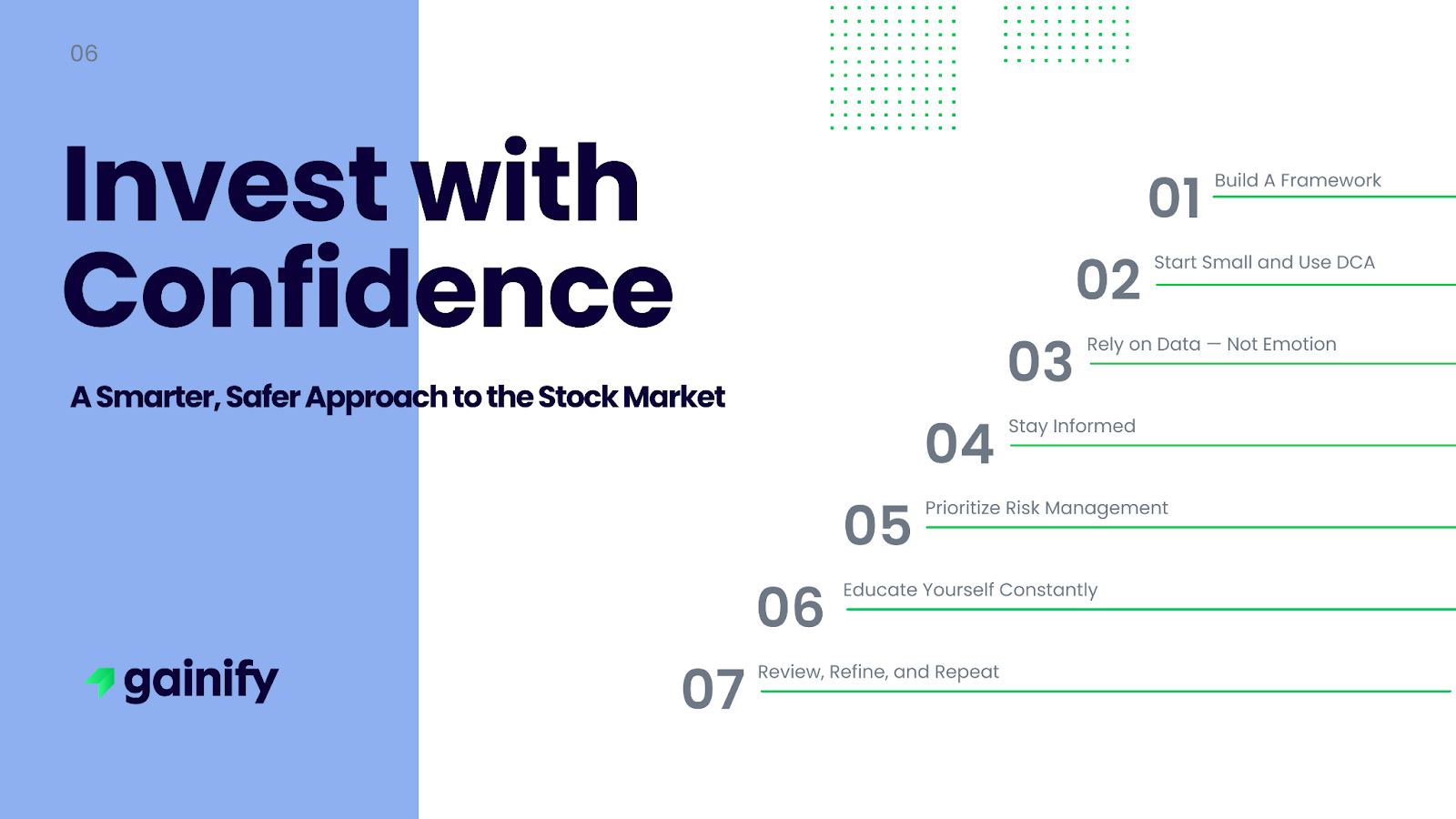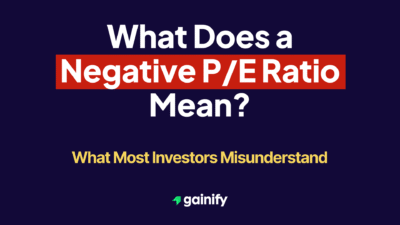Want to invest with confidence? The key lies in having a clear investment strategy, sticking to long-term goals, managing risk, and continuously educating yourself about the financial markets.
Confidence in investing isn’t about predicting short-term stock prices — it’s about having a system that works through market cycles and aligns with your personal financial plan.
Whether you’re just beginning your investment journey or refining an existing portfolio, this guide offers practical, professional insights to help you navigate stock market volatility and build lasting wealth.
Why Investor Confidence Matters
In the world of investing, confidence comes from clarity, not certainty. Investor confidence helps you avoid impulsive decisions during a market decline or emotional reactions to daily stock market volatility.
When you’re confident in your investment strategy, you’re less likely to panic during a short-term decline in stocks or chase momentum when prices spike. You understand the value of patience, process, and preparation — qualities shared by every successful long-term investor, from individual traders to institutional investors.
1. Build a Clear Investment Framework
Every confident investor starts with a strong foundation. That means developing an investment strategy tailored to your unique financial goals, financial situation, and risk tolerance.
Ask yourself:
- Are you investing for retirement, passive income, or wealth accumulation?
- Are your financial goals short-term or long-term?
- How much risk can you handle without compromising your peace of mind?
From there, determine your asset allocation — whether it’s a basket of stocks, mutual funds, ETFs, or a blend of all. A diversified portfolio built on fundamentals will help you weather stock market volatility and stay focused on long-term outcomes.
2. Start Small and Use Dollar-Cost Averaging (DCA)
You don’t need to start big. One of the smartest ways to begin is by starting small and applying dollar-cost averaging (DCA) — investing a fixed amount at regular intervals, regardless of stock prices.
DCA minimizes the risk of mistiming the market and helps you stay consistent through ups and downs. Over time, as your confidence and knowledge grow, you can gradually increase your exposure. This is especially helpful if you’re just starting out with mutual funds or investing in stocks through a retirement account.
Remember, Warren Buffett didn’t build Berkshire Hathaway overnight. Compounding works best when paired with discipline and time.
3. Rely on Data — Not Emotion
Emotional investing is one of the most common causes of underperformance. Stock market volatility can rattle even experienced investors. But confident investing is rooted in research, not reactions.
Use data such as earnings reports, forward estimates, sector performance, and valuation metrics to make informed decisions. Pay attention to market signals from institutional investors, track long-term trends, and assess how companies align with your financial plan.
Avoid trading based on social media hype or fear-driven headlines. Let numbers guide your actions, not narratives.
4. Stay Informed Without Getting Overwhelmed
There’s no shortage of market opinions. The real challenge is separating the useful from the distracting.
Instead of trying to follow everything, choose a few trusted platforms that offer real-time insights into the financial markets, including movements in stock prices, insider trades, mutual fund flows, and trending themes like AI and nuclear energy.
Being well-informed doesn’t mean reacting to every newsflash. It means seeing the big picture and using that clarity to reinforce your investment strategy. Tools like Gainify help filter signal from noise so you can stay focused on what truly matters.
5. Prioritize Risk Management
Confidence doesn’t mean being aggressive. It means being protected. Even the best stocks experience periods of decline. The difference lies in how you manage through it.
Here’s how seasoned investors protect capital:
- Position sizing: Don’t overexpose your portfolio to a single name or sector.
- Diversification: A balanced mix of asset classes helps smooth returns.
- Liquidity management: Keep cash available for flexibility.
- Portfolio reviews: Rebalance as needed, especially after large market moves.
Strong risk management is what lets long-term investors stay invested during uncertain times, including bouts of stock market volatility.
6. Educate Yourself Constantly
Confidence grows with knowledge. The most successful investors are always learning, whether they’re reading quarterly reports, studying macroeconomic trends, or revisiting foundational investment books.
If you’re serious about becoming a smarter investor in stocks, carve out time to read. Here are three timeless books every investor should explore:
- “The Intelligent Investor” by Benjamin Graham
A foundational text on value investing, risk management, and long-term thinking. - “One Up on Wall Street” by Peter Lynch
A practical guide that teaches how individual investors can beat the pros through sharp observation and simple analysis. - “The Psychology of Money” by Morgan Housel
A brilliant modern take on how emotion, behavior, and mindset shape financial decisions more than logic.
These books will sharpen your thinking, improve your financial literacy, and help you avoid costly mistakes on your investment journey.
7. Review, Refine, and Repeat
Confidence is a process, not a personality trait. As markets evolve, so should your approach.
Review your portfolio regularly:
- Are you still aligned with your financial goals?
- Has your financial situation changed?
- Are your holdings delivering on your expectations?
Don’t overhaul your strategy after every market move. Make small, thoughtful adjustments based on data, not emotion. Investing is a long game and confidence compounds as your experience deepens.
Final Thoughts: Confidence Is Built, Not Bought
To invest with confidence means to invest with intention. It’s about aligning your strategy with your goals, sticking to your process, and tuning out the noise. Whether you’re buying a single stock or managing a diversified portfolio of mutual funds, the fundamentals remain the same: protect your downside, stay informed, and trust the long-term trajectory.
This is not investment advice, but a framework for how disciplined investors build conviction, stay grounded, and achieve results. Investing is personal, and your confidence will grow as your understanding deepens.




